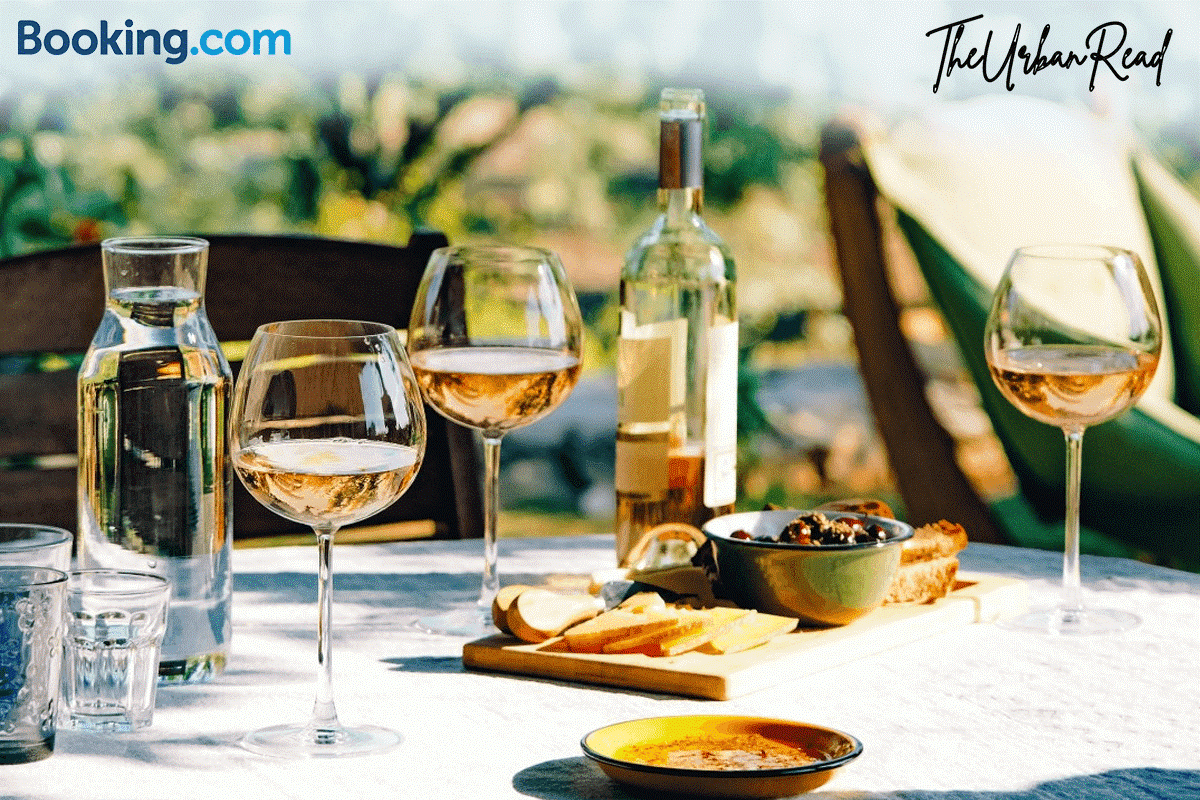Portugal, a country rich in history and culture, is equally celebrated for its diverse and exquisite wines. From the terraced vineyards of the Douro Valley to the coastal wineries of Alentejo, embark on a tantalizing journey through Portugal’s wine wonderland. Let’s uncork the stories behind the vineyards, savor the unique flavors, and explore the cultural tapestry woven into each glass.
So, raise your glass to the diversity of Portuguese wines, the passionate winemakers, and the centuries-old vineyards that stand as guardians of tradition. Whether you’re a seasoned oenophile or a casual wine enthusiast, Portugal’s wine wonderland invites you to savor the richness of its terroir and the warmth of its hospitality.
Popular Tourist Places In Portugal: Book Now
| Tourist Place | Hotel Rate per Night (USD) | Best Deals with Booking.com |
| Braga | $50 | Book Now |
| Porto | $99 | Book Now |
| Guimarães | $140 | Book Now |
| Algarve | $35 | Book Now |
| Madeira | $55 | Book Now |
| Azores | $120 | Book Now |
| Albufeira | $120 | Book Now |
1. Douro Valley: Where the River and Wine Converge
Harmony in the Hills: A Glimpse of Douro’s Terroir
Begin your wine odyssey in the Douro Valley, a UNESCO World Heritage site renowned for its stunning landscapes and historic vineyards. The terraced hills, adorned with grapevines, create a visual spectacle that mirrors the complexity of the wines produced here. Explore Quintas (wine estates) like Quinta do Crasto and Quinta de la Rosa, where centuries-old traditions blend seamlessly with modern winemaking techniques.
2. Alentejo: Sun-Kissed Vines and Coastal Breezes
Wine by the Waves: Coastal Vineyards of Alentejo
Head south to Alentejo, where the vineyards stretch toward the Atlantic coastline. The combination of abundant sunshine, cooling sea breezes, and a diverse range of grape varieties yields wines with a unique character. Visit Herdade do Esporão and Adega Mayor to experience the bold reds and crisp whites that exemplify Alentejo’s terroir.
3. Minho: Green Landscapes and Vinho Verde
Crisp and Refreshing: The Wines of Vinho Verde
Venture to the lush landscapes of Minho, the birthplace of Portugal’s famed Vinho Verde. The region’s vibrant green scenery provides a fitting backdrop for the light and refreshing wines that characterize Vinho Verde. Quinta de Amares and Adega Ponte de Lima offer a delightful exploration of this effervescent and versatile wine.
4. Wine and Culture: Tasting Beyond the Glass
A Cultural Symphony: Fado Nights and Wine Festivals
Wine in Portugal is more than a beverage; it’s a cultural expression. Attend a Fado night in Lisbon, where soul-stirring music pairs seamlessly with local wines. Plan your visit during one of the wine festivals, such as the Porto Wine Fest or the Vinho Verde Wine Fest, to immerse yourself in the vibrant tapestry of Portuguese wine culture.
FAQs:
Q1: What makes the terroir of the Douro Valley unique for winemaking?
The Douro Valley’s terroir is characterized by schist soils, extreme temperatures, and steep vineyard slopes. These factors contribute to the distinctive flavors and complexity of the wines produced in this UNESCO World Heritage site.
Q2: Which grape varieties are prominent in Alentejo’s coastal vineyards?
Alentejo boasts a variety of grape varieties, including Trincadeira, Aragonez, Alicante Bouschet for reds, and Antão Vaz, Arinto for whites. The coastal influence adds complexity to the wines.
Q3: Is Vinho Verde only available in white, and what makes it unique?
Vinho Verde is known for its crisp acidity and slight effervescence. While white varieties dominate, red and rosé Vinho Verde wines are also produced, showcasing a broader spectrum of flavors.
Q4: When are the best times to experience wine festivals in Portugal?
Wine festivals vary throughout the year. The Porto Wine Fest usually takes place in the summer, while the Vinho Verde Wine Fest often occurs in late spring. Check specific dates for each festival and plan your visit accordingly.
Q5: Can I purchase wines directly from the vineyards during visits?
Yes, many vineyards offer the opportunity to purchase wines directly from their cellars. It’s a fantastic way to bring a piece of Portugal’s wine wonderland home with you.
Q6: Can I visit the vineyards in Porto and Vila Nova de Gaia?
While Porto and Vila Nova de Gaia are more renowned for their wine cellars, some vineyards are located in the Douro Valley, accessible by boat or car from Porto. These vineyards offer a closer look at the winemaking process and the stunning landscapes of the Douro.
Q7: Are there wine-tasting events or festivals in Lisbon?
Yes, Lisbon hosts various wine-tasting events and festivals throughout the year. Check local event calendars for wine-related activities, from small tastings in wine bars to larger festivals celebrating Portuguese wines.
Q8: What are the signature wines of the Alentejo region?
Alentejo is known for its robust red wines, often dominated by grape varieties like Trincadeira and Aragonez. These wines are characterized by their full-bodied nature and rich, fruity flavors.
Q9: Is Madeira wine only produced in Funchal?
While Funchal is the capital of Madeira and a hub for Madeira wine, the vineyards are spread across the island. Consider exploring the different estates and cellars to experience the unique profiles of Madeira wines.
Q10: Can I purchase regional wines directly from the vineyards during my visits?
Yes, many vineyards offer the opportunity to purchase their wines directly. It’s a fantastic way to not only taste but also bring home the flavors and memories of your wine tour through Portugal.
Q11: Are there wine routes or trails for self-guided tours in Portugal?
Absolutely. Many regions in Portugal have designated wine routes or trails that visitors can explore independently. These routes provide a comprehensive experience, allowing you to discover the diverse vineyards and wineries at your own pace.
Q12: What makes Vinho Verde wines “green,” and are they exclusively white?
The term “Verde” in Vinho Verde doesn’t refer to the color but rather to the wines being young and fresh. While white varieties dominate, there are red and rosé Vinho Verde wines. The “green” represents the vibrant and youthful character of the wines.
Conclusion:
In the vineyards of Portugal, every glass tells a story—an intricate narrative of terroir, tradition, and innovation. From the terraced slopes of the Douro Valley to the coastal vineyards of Alentejo, and the green landscapes of Minho, Portugal’s wine wonderland is a testament to the nation’s vinous heritage.


















Leave a Reply